Weatherby's Newest Vanguard: The Series 2 And The .257 Weatherby Magnum Review
By Dan Arnold
©Copyright Precision Shooting Magazine
"I feel the need…the need for speed!"
Lt. Pete "Maverick" Mitchell and Lt. Nick "Goose" Bradshaw
– Top Gun 1986
Like Tom Cruise's character, we all have a need to go just a little faster whether we're talking about horses, cars, airplanes or rifles: Especially rifles.
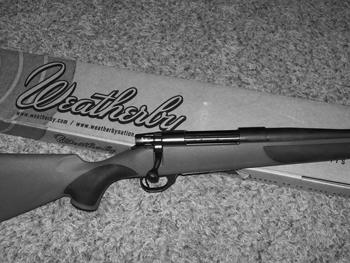
In my own case there was the .257 Roberts, a fairly quick stepper with good manners: Easy to load for, little muzzle blast, but nothing really pulse-quickening either. A change to the .25-06 Remington, with its ability to push 100-grain bullets just past the 3300 feet-per-second mark, accuracy, and lack of recoil set my heart fluttering, especially when it was chambered in one of Weatherby's Vanguard rifles.
The Vanguard and I hunted hard over a period of three years, from Wyoming's plains to Oklahoma's wheat fields, and I never found the rifle or the cartridge wanting, but…there was something bothering me, a little nagging detail, really.
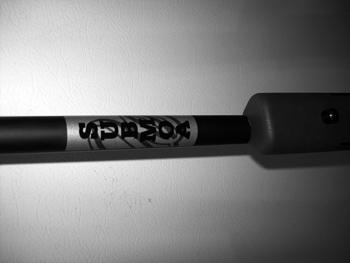
I was shooting a Remington cartridge in a Weatherby-branded rifle, a situation akin to building a Shelby Cobra replica and then dropping a stock small-block Chevy motor in it. Something had to be done.
Weatherby helped me out late in 2010 by announcing that they would be rolling out the Vanguard Series 2 at the beginning of 2011 chambered in a host of non-Weatherby calibers as well as the .257 and .300 Weatherby Magnums.
That did it. Not only would my universe be more harmonious with a Weatherby cartridge/rifle combination, but it promised just a little more speed. I immediately set out on a search for the new Vanguard, hopeful of purchasing a .257 Weatherby Magnum prior to my yearly pronghorn hunt, but it wasn't to be. Unfortunately, Oklahoma only has a few dealers who stock Weatherby products, and the salesmen at the one big-box retailer that regularly carries the Vanguard displayed a total ignorance of the Series 2. Alas, it wasn't meant to be.
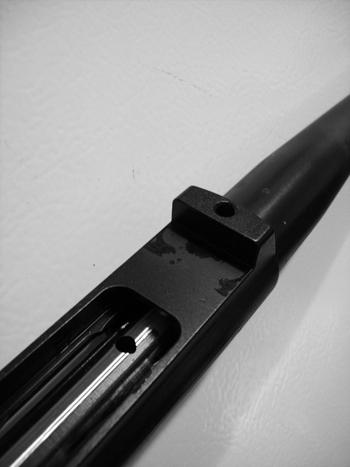
As it was, the .25-06 performed splendidly as always, dropping a doe at just over 300 yards with a single shot after a long crawl through the grass and cactus, just the thing the synthetic-stocked Vanguard was designed to do.
While I was in Casper, WY, I stopped at two comprehensive gun stores, one of which is actually a small chain with stores located mainly in the western states. When I stepped up to the counter, I asked the salesman if he had any Weatherby Vanguard's chambered in .257 Weatherby. He answered, "The old Vanguard or the new one?" Truly, fate was shining on me that evening.
After noting the "Sub MOA" decal on the bottom of the barrel and checking the trigger, I handed it back to the salesman and asked for the transfer paperwork, probably making that one of the fastest sales he had made all week. That wasn't all, though. While I waited for the NICS check, I located a couple of boxes of factory brass, dies, a shell holder, appropriately-sized plastic cartridge boxes, primers, and, after perusing an open copy of Nosler's reloading manual, a pound of Reloader 25. Thank you, Sportsman's Warehouse, for making that one of my easiest shopping trips ever!
After returning home, I gave the new Vanguard a good going-over just to see what changes had been made.
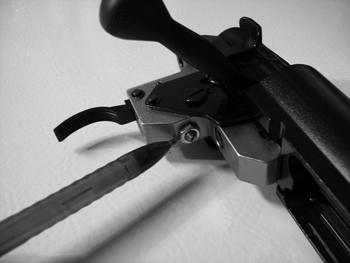
The stock is still polymer, now in a lightly textured gray with black "Griptonite" inserts on the pistol grip and fore-end which provide a somewhat tacky feel, a distinct improvement over the old Vanguard's slick, molded-in checkering. The pistol grip also features a slight palm swell, which combined with the pronounced Weatherby Monte Carlo buttstock, makes for a comfortable rifle overall. Capping the butt is a 3/4 inch, Weatherby-branded recoil pad, probably not necessary with the .257, but I'm sure it would be much appreciated by those choosing the .300 Weatherby Magnum.
The stock has no metal bedding inserts in the action area, nor any bedding material at all. Inserting the barreled action into the stock sans the action screws, there were no discernable wiggles or gaps. The fit seemed so precise that I smoked the action and recoil lug with a carbide smoker and put the barreled action back into the stock just to see where it was making contact. Sure enough, everything is touching just like it should. Molding technology has certainly progressed over the last few years.
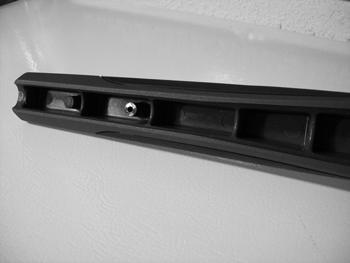
Forward of the recoil lug recess, the fore-end is hollow with molded-in reinforcement ribs right up to the tip, where it becomes solid once more, providing a 1/2-inch pad for the barrel to rest on. That is correct: Just like its earlier brethren, the Series 2 does not feature a free-floating barrel either. Tightening the screws made no difference in the fit of barreled action and stock and I could detect no evidence of flexing as everything was tightened down.
The action and barrel are still classic Howa, as you would expect since they manufacture the Vanguard for Weatherby. The action is a classic push-feed with two locking lugs, a polished and fluted bolt body, and safety on the right side where it is integral with the trigger assembly. There are a few changes over the earlier Vanguard, however. The safety has been updated to a three-position design that allows unloading the rifle while the safety is engaged, a feature long overdue. As well, all Series 2 rifles now feature an attractive bead-blasted matte finish on the barrel and action that matches the matte surface of my Burris scope almost perfectly. The trigger guard is coated in a black finish that isn't quite a matte, nor is it really a gloss either. However, it doesn't look out of place.
The biggest change in the Series 2 is its trigger. The earlier Vanguard featured an adjustable trigger that could be tuned to a reliable 2 3/4 lbs, but in my rifle wasn't as smooth as I would have liked. After a few trips to the range, I replaced it with a Timney unit.
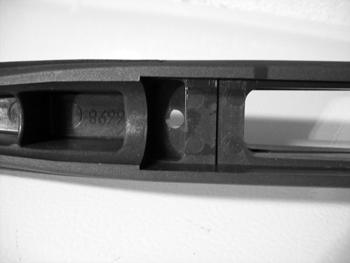
The Series 2 is touted as having an entirely new and much better trigger. Out of the box, the trigger pull measured 2 3/4 pounds and was much smoother than the earlier Vanguard. In operation, the trigger is practically a two-stage design although it works exactly the opposite of what I am used to in a service rifle trigger. The first stage is rather long and is so light as to be immeasurable. The second stage is smooth and breaks like the proverbial glass rod. The literature that came with the rifle doesn't describe how the trigger works, but I have to speculate if it is similar in concept to the Savage AccuTrigger. Although instead of having a two-piece trigger as in the Savage, the Vanguard's trigger might have been designed so that the first stage has to be fully taken up before the sear will release, thereby allowing a lower trigger weight.
A little fiddling with the adjustment screw produced a pull weight of 2 1/2 pounds, the minimum weight specified in the owner's manual. Although it is a good trigger, the funky-feeling two-stage was just a little too foreign for me. Since I already had a Timney on the early Vanguard, I swapped it out for the Series 2 trigger. The Timney is a three-position design like the Series 2 trigger, so I still retain the feature of unloading with the safety on.
Another departure from the old Vanguard is its accuracy. The old Vanguard used to be guaranteed to hold a 1.5-inch three-shot group and included in the box was a factory test target to prove it. Any rifles that shot MOA or less were placed in upgraded stocks and sold as "MOA" rifles. To attest to their accuracy, the floorplate bore a highly stylized "MOA" logo. This particular version sold for significantly more than the standard Vanguard.
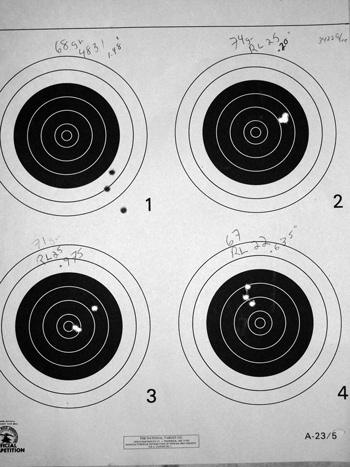
Now, ALL of the Series 2 rifles are guaranteed to shoot minute-of-angle groups when using Weatherby or other premium ammunition. Since Weatherby factory .257 Magnum ammunition is currently retailing at a little more than $3.00 per round, I elected to try the Series 2 with several different handloads. After perusing the Nosler reloading manual and Jungle Jim Scott's article on the .257 Weatherby (PS September, 2011), I put together five different loads utilizing the Nosler 100-grain Ballistic Tip, Federal magnum primers, and Weatherby brass to get an idea of what the rifle might like.
After a few shots to get the scope dialed in, I was glad that I had brought a couple of other rifles along. The .257 Weatherby Magnum generates a lot of barrel heat in a short amount of time. Three-round groups were going to be the norm, with at least twenty minutes between groups to let the barrel cool while I cleaned it with solvent and patches.
The first, purely arbitrary load of 64-grains of IMR 4350 yielded a group of 1.2 inches: Not MOA, but not bad for a barrel that was essentially being broken in. The second group, using 68-grains of IMR 4831 produced a semi-disappointing 1.5-inch group. The "MOA" sticker that I had removed from the bottom of the barrel was beginning to taunt me now.
Group three was much better: .97 inches, with two of the shots overlapping, so a load of something around 71-grains of Reloader 25 was beginning to look promising.
The next group, using 74-grains of Reloader 25 put three shots in a neat cluster with each shot touching its two neighbors. Overall, the group looks a whole lot like a silhouette of Mickey Mouse's head. Measuring from the outside edges of the two widest-spaced holes and dividing by two gives a measurement of .20 inches.
The fifth and last group was fired with 67-grains of Reloader 22. The result was a neat group measuring .630 inches.
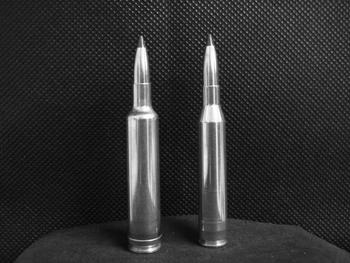
That basic test pointed me toward Reloader 22 and 25 as good candidates for experimentation. I assumed that the miniscule group fired with 74-grains of Reloader 25 was a fluke, and it would seem to be since I have yet to duplicate it. However, it still remains the best choice for this rifle, easily turning in sub-MOA groups as long as I'm doing my part.
Reloader 22 remains a viable choice as well. 65 to 67-grain loads with the Nosler bullet all stayed well within MOA, so if the store is out of Reloader 25, I can always substitute Reloader 22.
This was my first Weatherby cartridge to work with and only my second belted-magnum, but I found it as easy to reload for as any other rifle cartridge. Case life has been reasonable so far, which is good since the price suggests that somewhere out there, a master craftsman is fabricating these things one by one out of a special alloy that probably includes platinum as an ingredient. As for getting an increase in velocity over the .25-06, well…
Both the old and new Vanguard's share a 24-inch barrel and it seems that most reloading manuals stipulate a 26-inch tube for their testing, so I didn't really expect to achieve the same results. I was hopeful of pushing that 100-grain bullet a little faster though.
As it is, the load using 74.0 grains of Reloader 25 achieves an average of 3,420 ft/sec, so I did pick up 100 ft/sec over the .25-06 with the same bullet. Speed comes at a cost, though. To achieve that 100 ft/sec, what amounts to a mere 3% increase requires a hefty 40% increase in powder. The effect that will have on barrel life is predictable, but not really a factor with this or any hunting rifle.
Overall, I'm extremely pleased with Weatherby's newest Vanguard. The changes that Weatherby has made are positive and they have been done at little cost. The list price on my rifle was $435.00, a mere $36.00 increase over what I paid for my old rifle…and that was three years ago. Having the rifle chambered in .257 Weatherby Magnum is a bonus. True, it's not that much faster, but to my eye it's a lot sexier looking as I sit here comparing it side by side with the .25-06.
And the need for speed?
Well, I'm pretty much satiated...for now.
By Dan Arnold
©Copyright Precision Shooting Magazine
"I feel the need…the need for speed!"
Lt. Pete "Maverick" Mitchell and Lt. Nick "Goose" Bradshaw
– Top Gun 1986
Like Tom Cruise's character, we all have a need to go just a little faster whether we're talking about horses, cars, airplanes or rifles: Especially rifles.

In my own case there was the .257 Roberts, a fairly quick stepper with good manners: Easy to load for, little muzzle blast, but nothing really pulse-quickening either. A change to the .25-06 Remington, with its ability to push 100-grain bullets just past the 3300 feet-per-second mark, accuracy, and lack of recoil set my heart fluttering, especially when it was chambered in one of Weatherby's Vanguard rifles.
The Vanguard and I hunted hard over a period of three years, from Wyoming's plains to Oklahoma's wheat fields, and I never found the rifle or the cartridge wanting, but…there was something bothering me, a little nagging detail, really.

I was shooting a Remington cartridge in a Weatherby-branded rifle, a situation akin to building a Shelby Cobra replica and then dropping a stock small-block Chevy motor in it. Something had to be done.
Weatherby helped me out late in 2010 by announcing that they would be rolling out the Vanguard Series 2 at the beginning of 2011 chambered in a host of non-Weatherby calibers as well as the .257 and .300 Weatherby Magnums.
That did it. Not only would my universe be more harmonious with a Weatherby cartridge/rifle combination, but it promised just a little more speed. I immediately set out on a search for the new Vanguard, hopeful of purchasing a .257 Weatherby Magnum prior to my yearly pronghorn hunt, but it wasn't to be. Unfortunately, Oklahoma only has a few dealers who stock Weatherby products, and the salesmen at the one big-box retailer that regularly carries the Vanguard displayed a total ignorance of the Series 2. Alas, it wasn't meant to be.

As it was, the .25-06 performed splendidly as always, dropping a doe at just over 300 yards with a single shot after a long crawl through the grass and cactus, just the thing the synthetic-stocked Vanguard was designed to do.
While I was in Casper, WY, I stopped at two comprehensive gun stores, one of which is actually a small chain with stores located mainly in the western states. When I stepped up to the counter, I asked the salesman if he had any Weatherby Vanguard's chambered in .257 Weatherby. He answered, "The old Vanguard or the new one?" Truly, fate was shining on me that evening.
After noting the "Sub MOA" decal on the bottom of the barrel and checking the trigger, I handed it back to the salesman and asked for the transfer paperwork, probably making that one of the fastest sales he had made all week. That wasn't all, though. While I waited for the NICS check, I located a couple of boxes of factory brass, dies, a shell holder, appropriately-sized plastic cartridge boxes, primers, and, after perusing an open copy of Nosler's reloading manual, a pound of Reloader 25. Thank you, Sportsman's Warehouse, for making that one of my easiest shopping trips ever!
After returning home, I gave the new Vanguard a good going-over just to see what changes had been made.

The stock is still polymer, now in a lightly textured gray with black "Griptonite" inserts on the pistol grip and fore-end which provide a somewhat tacky feel, a distinct improvement over the old Vanguard's slick, molded-in checkering. The pistol grip also features a slight palm swell, which combined with the pronounced Weatherby Monte Carlo buttstock, makes for a comfortable rifle overall. Capping the butt is a 3/4 inch, Weatherby-branded recoil pad, probably not necessary with the .257, but I'm sure it would be much appreciated by those choosing the .300 Weatherby Magnum.
The stock has no metal bedding inserts in the action area, nor any bedding material at all. Inserting the barreled action into the stock sans the action screws, there were no discernable wiggles or gaps. The fit seemed so precise that I smoked the action and recoil lug with a carbide smoker and put the barreled action back into the stock just to see where it was making contact. Sure enough, everything is touching just like it should. Molding technology has certainly progressed over the last few years.

Forward of the recoil lug recess, the fore-end is hollow with molded-in reinforcement ribs right up to the tip, where it becomes solid once more, providing a 1/2-inch pad for the barrel to rest on. That is correct: Just like its earlier brethren, the Series 2 does not feature a free-floating barrel either. Tightening the screws made no difference in the fit of barreled action and stock and I could detect no evidence of flexing as everything was tightened down.
The action and barrel are still classic Howa, as you would expect since they manufacture the Vanguard for Weatherby. The action is a classic push-feed with two locking lugs, a polished and fluted bolt body, and safety on the right side where it is integral with the trigger assembly. There are a few changes over the earlier Vanguard, however. The safety has been updated to a three-position design that allows unloading the rifle while the safety is engaged, a feature long overdue. As well, all Series 2 rifles now feature an attractive bead-blasted matte finish on the barrel and action that matches the matte surface of my Burris scope almost perfectly. The trigger guard is coated in a black finish that isn't quite a matte, nor is it really a gloss either. However, it doesn't look out of place.
The biggest change in the Series 2 is its trigger. The earlier Vanguard featured an adjustable trigger that could be tuned to a reliable 2 3/4 lbs, but in my rifle wasn't as smooth as I would have liked. After a few trips to the range, I replaced it with a Timney unit.

The Series 2 is touted as having an entirely new and much better trigger. Out of the box, the trigger pull measured 2 3/4 pounds and was much smoother than the earlier Vanguard. In operation, the trigger is practically a two-stage design although it works exactly the opposite of what I am used to in a service rifle trigger. The first stage is rather long and is so light as to be immeasurable. The second stage is smooth and breaks like the proverbial glass rod. The literature that came with the rifle doesn't describe how the trigger works, but I have to speculate if it is similar in concept to the Savage AccuTrigger. Although instead of having a two-piece trigger as in the Savage, the Vanguard's trigger might have been designed so that the first stage has to be fully taken up before the sear will release, thereby allowing a lower trigger weight.
A little fiddling with the adjustment screw produced a pull weight of 2 1/2 pounds, the minimum weight specified in the owner's manual. Although it is a good trigger, the funky-feeling two-stage was just a little too foreign for me. Since I already had a Timney on the early Vanguard, I swapped it out for the Series 2 trigger. The Timney is a three-position design like the Series 2 trigger, so I still retain the feature of unloading with the safety on.
Another departure from the old Vanguard is its accuracy. The old Vanguard used to be guaranteed to hold a 1.5-inch three-shot group and included in the box was a factory test target to prove it. Any rifles that shot MOA or less were placed in upgraded stocks and sold as "MOA" rifles. To attest to their accuracy, the floorplate bore a highly stylized "MOA" logo. This particular version sold for significantly more than the standard Vanguard.

Now, ALL of the Series 2 rifles are guaranteed to shoot minute-of-angle groups when using Weatherby or other premium ammunition. Since Weatherby factory .257 Magnum ammunition is currently retailing at a little more than $3.00 per round, I elected to try the Series 2 with several different handloads. After perusing the Nosler reloading manual and Jungle Jim Scott's article on the .257 Weatherby (PS September, 2011), I put together five different loads utilizing the Nosler 100-grain Ballistic Tip, Federal magnum primers, and Weatherby brass to get an idea of what the rifle might like.
After a few shots to get the scope dialed in, I was glad that I had brought a couple of other rifles along. The .257 Weatherby Magnum generates a lot of barrel heat in a short amount of time. Three-round groups were going to be the norm, with at least twenty minutes between groups to let the barrel cool while I cleaned it with solvent and patches.
The first, purely arbitrary load of 64-grains of IMR 4350 yielded a group of 1.2 inches: Not MOA, but not bad for a barrel that was essentially being broken in. The second group, using 68-grains of IMR 4831 produced a semi-disappointing 1.5-inch group. The "MOA" sticker that I had removed from the bottom of the barrel was beginning to taunt me now.
Group three was much better: .97 inches, with two of the shots overlapping, so a load of something around 71-grains of Reloader 25 was beginning to look promising.
The next group, using 74-grains of Reloader 25 put three shots in a neat cluster with each shot touching its two neighbors. Overall, the group looks a whole lot like a silhouette of Mickey Mouse's head. Measuring from the outside edges of the two widest-spaced holes and dividing by two gives a measurement of .20 inches.
The fifth and last group was fired with 67-grains of Reloader 22. The result was a neat group measuring .630 inches.

That basic test pointed me toward Reloader 22 and 25 as good candidates for experimentation. I assumed that the miniscule group fired with 74-grains of Reloader 25 was a fluke, and it would seem to be since I have yet to duplicate it. However, it still remains the best choice for this rifle, easily turning in sub-MOA groups as long as I'm doing my part.
Reloader 22 remains a viable choice as well. 65 to 67-grain loads with the Nosler bullet all stayed well within MOA, so if the store is out of Reloader 25, I can always substitute Reloader 22.
This was my first Weatherby cartridge to work with and only my second belted-magnum, but I found it as easy to reload for as any other rifle cartridge. Case life has been reasonable so far, which is good since the price suggests that somewhere out there, a master craftsman is fabricating these things one by one out of a special alloy that probably includes platinum as an ingredient. As for getting an increase in velocity over the .25-06, well…
Both the old and new Vanguard's share a 24-inch barrel and it seems that most reloading manuals stipulate a 26-inch tube for their testing, so I didn't really expect to achieve the same results. I was hopeful of pushing that 100-grain bullet a little faster though.
As it is, the load using 74.0 grains of Reloader 25 achieves an average of 3,420 ft/sec, so I did pick up 100 ft/sec over the .25-06 with the same bullet. Speed comes at a cost, though. To achieve that 100 ft/sec, what amounts to a mere 3% increase requires a hefty 40% increase in powder. The effect that will have on barrel life is predictable, but not really a factor with this or any hunting rifle.
Overall, I'm extremely pleased with Weatherby's newest Vanguard. The changes that Weatherby has made are positive and they have been done at little cost. The list price on my rifle was $435.00, a mere $36.00 increase over what I paid for my old rifle…and that was three years ago. Having the rifle chambered in .257 Weatherby Magnum is a bonus. True, it's not that much faster, but to my eye it's a lot sexier looking as I sit here comparing it side by side with the .25-06.
And the need for speed?
Well, I'm pretty much satiated...for now.

